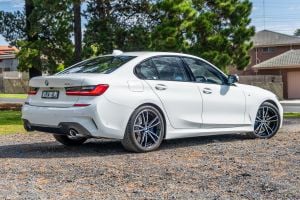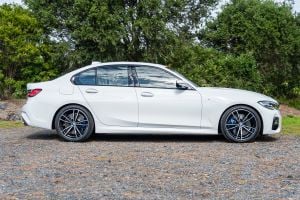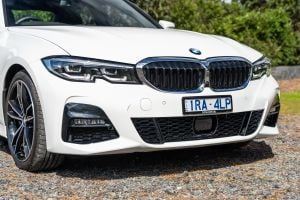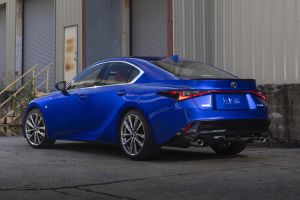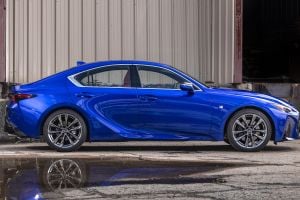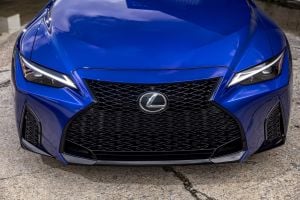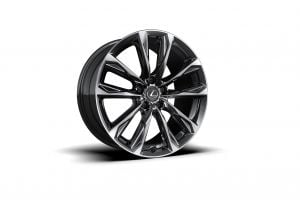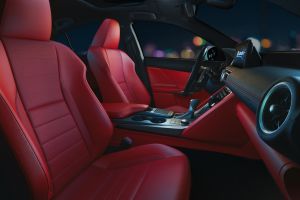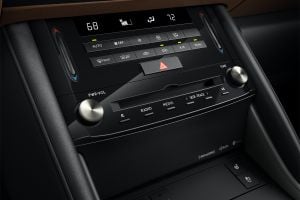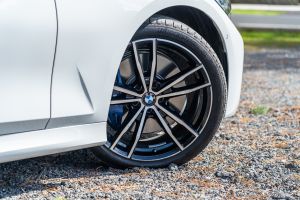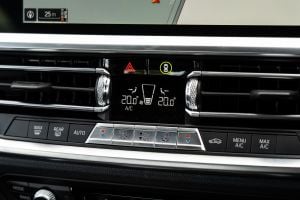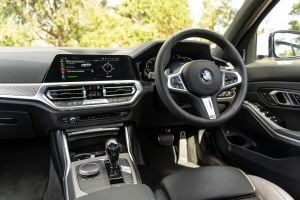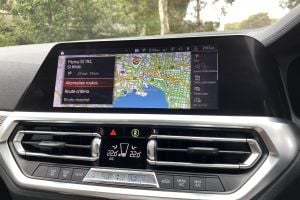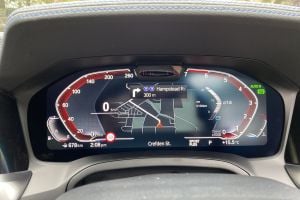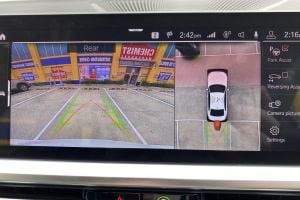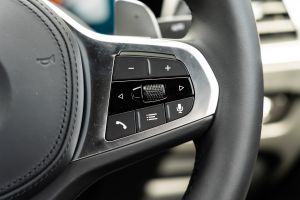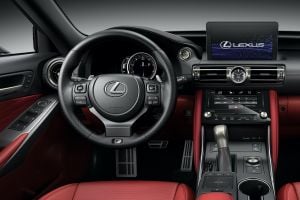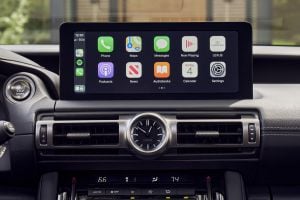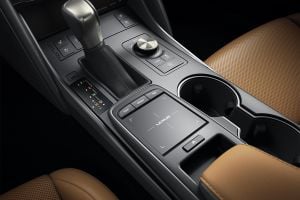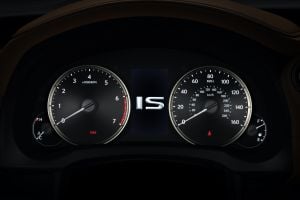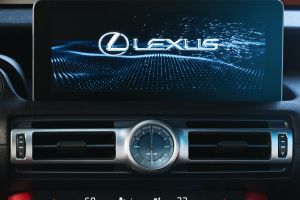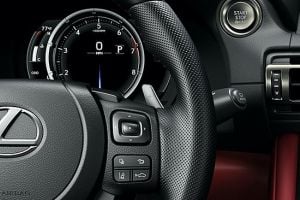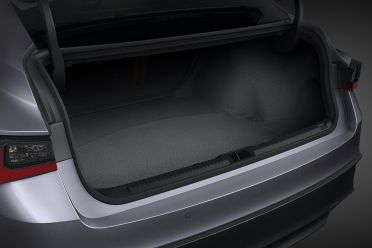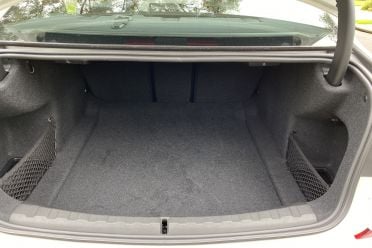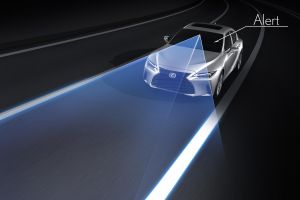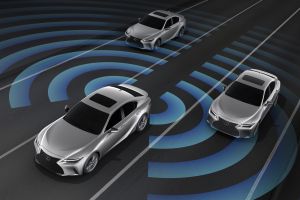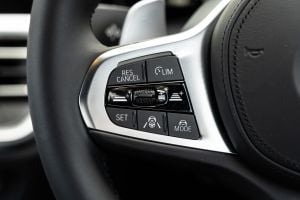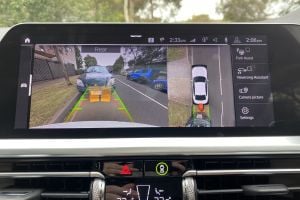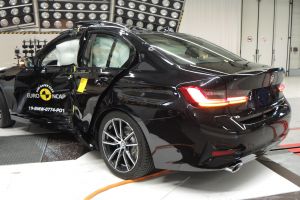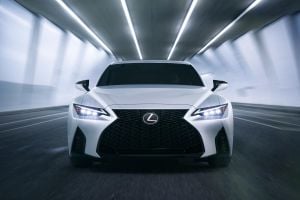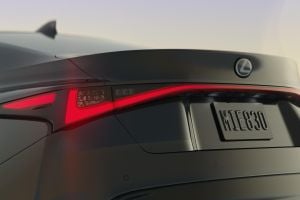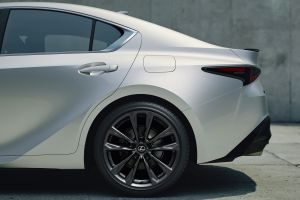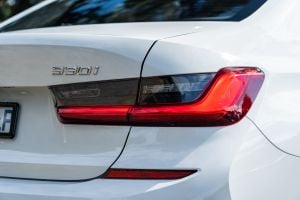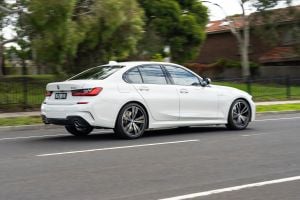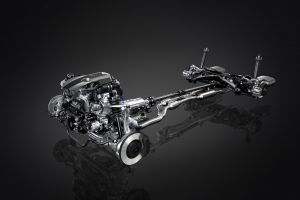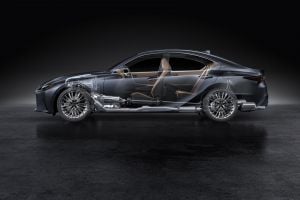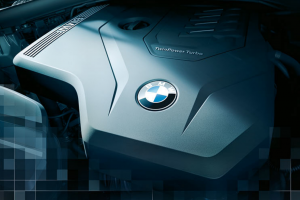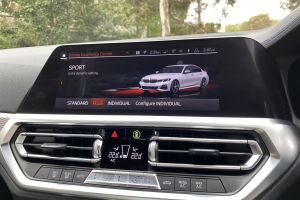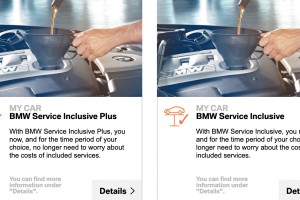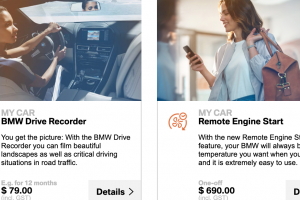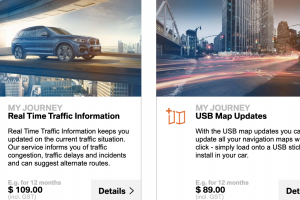Lexus this week announced its reskinned IS sedan would go on sale from November 6 in Australia. Which got us thinking about what sort of comparison testing we’ll put it through.
The standout competitor is BMW’s G20 3 Series, the benchmark in the class. That said, the Mercedes-Benz C-Class, Audi A4, Genesis G70, Jaguar XE, Alfa Romeo Giulia, and Volvo S60 might have something to say about that.
Either way, this is a spec-based twin test that hopefully proves informative. As is always the case, we’ll do a proper comparison test as soon as we’re able to.
Pricing
Traditionally the most popular BMW 3 Series variant in Australia has been the 330i M Sport, priced at $75,900 before on-road costs. The Lexus IS derivative that lines up best against this variant is the IS 300 F Sport at an even $70,000.
The 3 Series sedan range in Australia kicks off at $68,900 for the 320i models, $81,900 for the 330e plug-in hybrid, and $98,900 for the M340i xDrive Pure inline-six.
The Lexus IS starts at $61,500 for the IS 300 Luxury, and climbs to $70,000 for the IS 300 F Sport. The IS 300h plugless hybrids are $3000 more. The IS 350 V6 opens at $75,000.
Key features
Traditionally, BMW and Mercedes-Benz would make lots of features extra-cost options, giving Lexus a real advantage. But, times change.
Common features
- 19-inch wheels
- LED headlights with auto high beam
- Leather seat trim, powered adjustment
- Circa 10-inch touchscreen
- Digitised trip data computer
- Satellite navigation with live traffic
- Digital radio
- Proximity key fob
Choice options:
- Lexus: Sunroof, Mark Levinson audio, sunshade packaged for $3100
- BMW: Sunroof for $2900 and Harman/Kardon audio for $1100
BMW offers a far longer list of options beyond this, from a M Sport rear differential ($2400), though to BMW Laserlights ($1900), and various wheel and trim choices.
Cabins
The BMW’s interior comes with a projecting head-up display and a 12-inch fully digital instrument cluster that shows maps as well as driving data. The BMW OS 7.0 infotainment runs off touch inputs, voice control, or the iDrive rotary dial with button shortcuts.
Trims vary from Aluminium Tetragon as pictured to oak wood, maple wood, ash wood, or aluminium mesh. The leather seats can be ordered in black, beige, oyster, cognac or mocha brown. There’s a lot of choice.
BMW is also regularly expanding its ConnectedDrive online store, where you can download updates like remote engine start, a dashcam, Remote Services, wireless CarPlay prep, cloud-based speech processing, and more things along these lines.
The Lexus’s interior largely carries over the lower dash – ventilation controls with haptic touchpoints, below which sits the drive mode selector, seat heating/cooling buttons, gear shifter, and infotainment trackpad – but gets a new 10.3-inch touchscreen that’s 150mm closer to the driver than it was in the old car.
It now runs Apple CarPlay and (unlike the Bimmer for now, though an over-the-air update should come) Android Auto. Behind that wheel are LFA ‘inspired’ instruments that blend a mechanical interface and digital inner workings. The round vents are new.
The ‘ochre’ interior trim complements a choice of black, white or red leather and dash trims. There’s no doubt it’s beautifully made and it’s good to see more contemporary infotainment, but for tech-heads the BMW still appears to offer more.
Dimensions
| BMW 330i | Lexus IS 300 F Sport | |
|---|---|---|
| Length | 4709mm | 4710mm |
| Width | 1827mm | 1840mm |
| Height | 1435mm | 1435mm |
| Wheelbase | 2851mm | 2800mm |
| Weight | 1433kg | NA (about 1600kg) |
| Boot capacity | 480L | NA (about 480L) |
Safety
Both cars come pretty loaded up with all the latest active safety systems.
We’re talking about autonomous emergency braking that is designed to detect cyclists and pedestrians, lane-departure alert and active lane-keeping assist with steering intervention, cross-traffic alert at the rear, active cruise control, and blind-spot monitoring.
The IS is the first Lexus in Australia to debut Lexus Connected Services, including automated collision notification, SOS call and stolen vehicle tracking. BMW’s ConnectedDrive technology offers the same sort of functionality.
Performance
BMW’s 2.0-litre turbocharged four makes 190kW of peak power and 400Nm of torque, sent to the rear wheels through a ZF eight-speed automatic transmission. Fuel-saving features include active grille shutters, and brake-energy recuperation.
The reskinned Lexus IS 300 carries over the same engine as before, fettled to meet Euro 6 emissions standards. It puts out 180kW and 350Nm, uses an eight-speed automatic, and rear-wheel drive.
BMW claims a zero to 100km/h sprint time of 5.8 seconds. Lexus hasn’t published the 0-100km/h claim for the revised IS, though the previous iteration did the dash in a reported 7 seconds.
If you need more power, the all-wheel drive BMW M340i’s turbocharged inline-six makes 285kW/500Nm and takes only 4.4 seconds to get the car to 100km/h. If you want to reduce your emissions, the 330e is a PHEV that can do daily errands as an electric car.
The Lexus IS 350’s naturally aspirated V6 makes 232kW and 380Nm, and gets the 0-100km/h time down to about 5.9 seconds. Lexus’s answer to the 330e is the IS 300h hybrid, which is a conventional hybrid system that uses a claimed 5.1L/100km.
| BMW 330i | Lexus IS 300 F Sport | |
|---|---|---|
| Engine | 2.0-litre turbo | 2.0-litre turbo |
| Fuel type | Premium petrol | Premium petrol |
| Power | 190kW | 180kW |
| Torque | 400Nm | 350Nm |
| Transmission | 8-speed auto | 8-speed auto |
| Driven wheels | Rear | Rear |
| Fuel consumption | 6.4L/100km | NA (about 7.5L/100km) |
| 0-100km/h | 5.8 seconds | NA (about 7 seconds) |
Dynamics
Unlike the 2021 Lexus IS, the G20 3 Series was a clean-sheet redesign over its predecessor, based on the company’s longitudinal CLAR (cluster architecture) platform.
We don’t know the exact weight of the new IS, but the old car was 1640kg and the new one will be at least 1600kg given the maximum weight loss is billed as 30kg. Thus it’ll be around 170kg heavier than the 1433kg Bimmer 330i.
The Bavarian’s suspension layout remains strut/multi-link, though the components use more lightweight materials. The 330i also comes standard with adaptive M suspension including adjustable dampers that make the ride firmer or softer at the press of a button.
It also comes with speed-sensitive Servotronic electric-motor-actuated power steering, meaning it becomes more resistant at higher speeds and lighter in car parks.
Lexus claims that “never before has such a focus been placed on enhancing the renowned rear-wheel drive dynamics of a new Lexus IS”. The brand made a new technical centre at Shimoyama to develop its vehicles moving forward.
The revised chassis has wider tracks (45mm front and 50mm rear), the car’s body is stiffer thanks to more bracing and welds, there’s more aluminium used to cut weight, and both the front double wishbone and rear strut suspension setups are lighter and stronger.
The F Sport models also have Adaptive Variable Suspension with changeable damper stiffness linked to your selected driving mode. There’s also torque-vectoring by braking.
It’s hard to imagine the revised IS 300 F Sport clearly bettering the hard-to-fault BMW in corners, but you can expect the gap to narrow.
Running costs
BMW is one of the dwindling number of brands that only offers a three-year warranty. Lexus gives you four.
The Bimmer has no set servicing intervals, instead the car’s onboard computer notifies you and your dealer when a service is needed, and what needs attention. You can buy a five-year/80,000km basic service package for $1565.
Lexus is yet to reveal service costs for the IS. While BMW has the ConnectedDrive store full of things to download into your car, Lexus counters with a hard-to-beat customer care package that it calls Encore, and which we detailed in its entirety here.
Preliminary thoughts
Lexus has done some substantial revising of the new IS, though its engine performance in IS 300 guise falls short of the BMW’s, and it’ll be hard-pressed to match the German’s agility through corners. Plus its interior tech still appears to have catching up to do.
But Lexus’ refinement, sound system, craftsmanship, and customer experience are always outstanding, and this iteration of the IS makes big strides when it comes to active safety, infotainment, and exciting design.
Did you like this on-paper comparison? There are more linked below.

